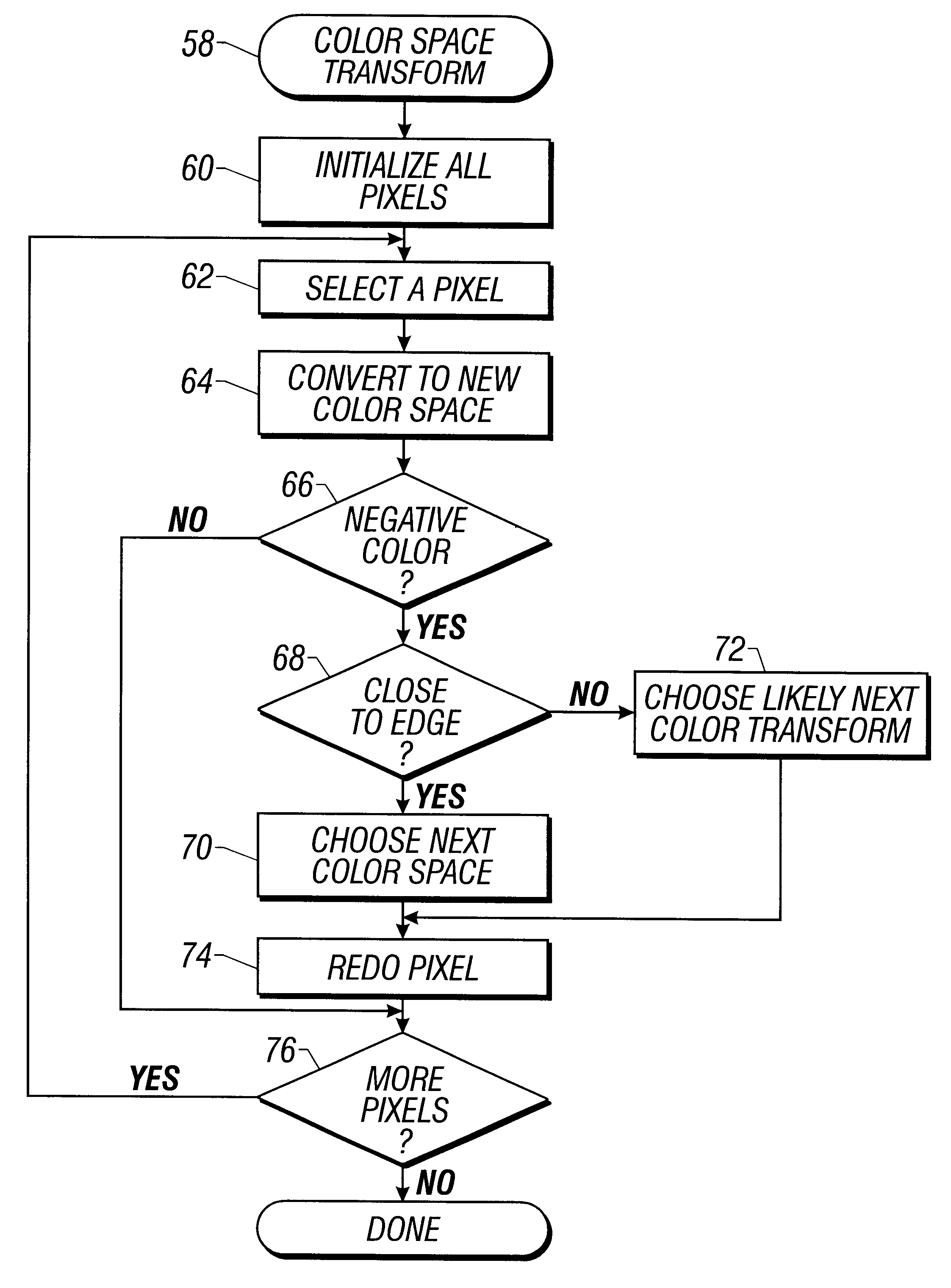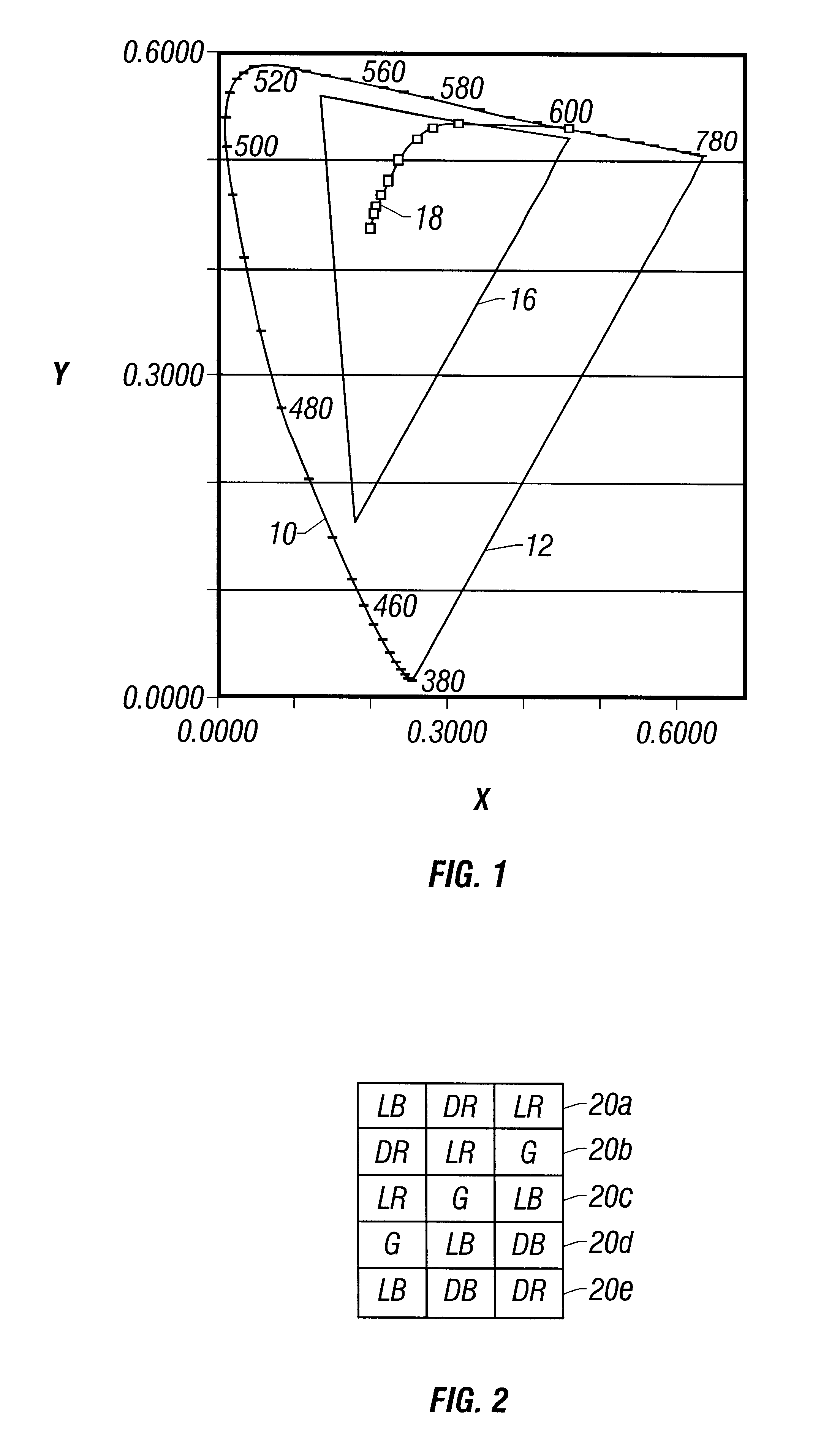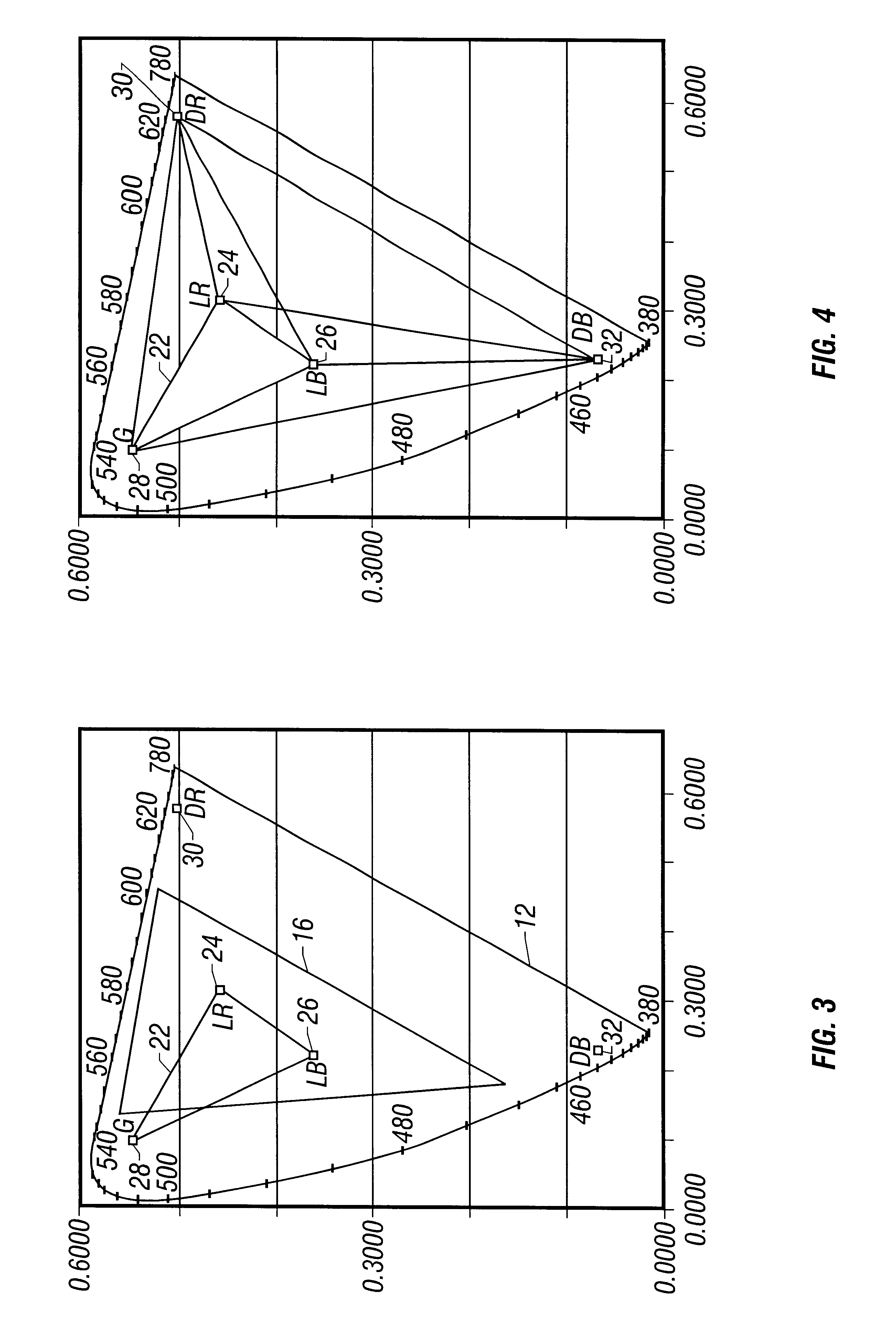Performing color conversion in extended color polymer displays
a polymer display and color conversion technology, applied in the field of polymer displays, can solve the problems of limited spectral characteristics of polymer displays and inefficient use of colors
- Summary
- Abstract
- Description
- Claims
- Application Information
AI Technical Summary
Problems solved by technology
Method used
Image
Examples
Embodiment Construction
Referring to FIG. 1, a standard chromaticity diagram includes X and Y axes as illustrated. The illustrated chromaticity diagram is in accordance with a standard for the measurement and specification of color defined by the Commission Internationale de l'Eclairage (CIE).
Pursuant to this standard, a spectral energy distribution (not shown) is defined for each of the three primary colors in the visible spectrum. Normally, it is desirable to define any visible color to be displayed in terms of the three primary colors. Spectral distributions in terms of wavelength for the CIE-defined primary colors are defined wherein the distributions are plotted with a measure of intensity on the vertical axis versus wavelength. A distribution for each of the primary colors results.
The spectral distribution for the three primary colors defined by the CIE is used to derive a two-dimensional coordinate space, as shown in FIG. 1, that comprehends all humanly visible colors at all levels of saturation. Th...
PUM
 Login to View More
Login to View More Abstract
Description
Claims
Application Information
 Login to View More
Login to View More - R&D
- Intellectual Property
- Life Sciences
- Materials
- Tech Scout
- Unparalleled Data Quality
- Higher Quality Content
- 60% Fewer Hallucinations
Browse by: Latest US Patents, China's latest patents, Technical Efficacy Thesaurus, Application Domain, Technology Topic, Popular Technical Reports.
© 2025 PatSnap. All rights reserved.Legal|Privacy policy|Modern Slavery Act Transparency Statement|Sitemap|About US| Contact US: help@patsnap.com



